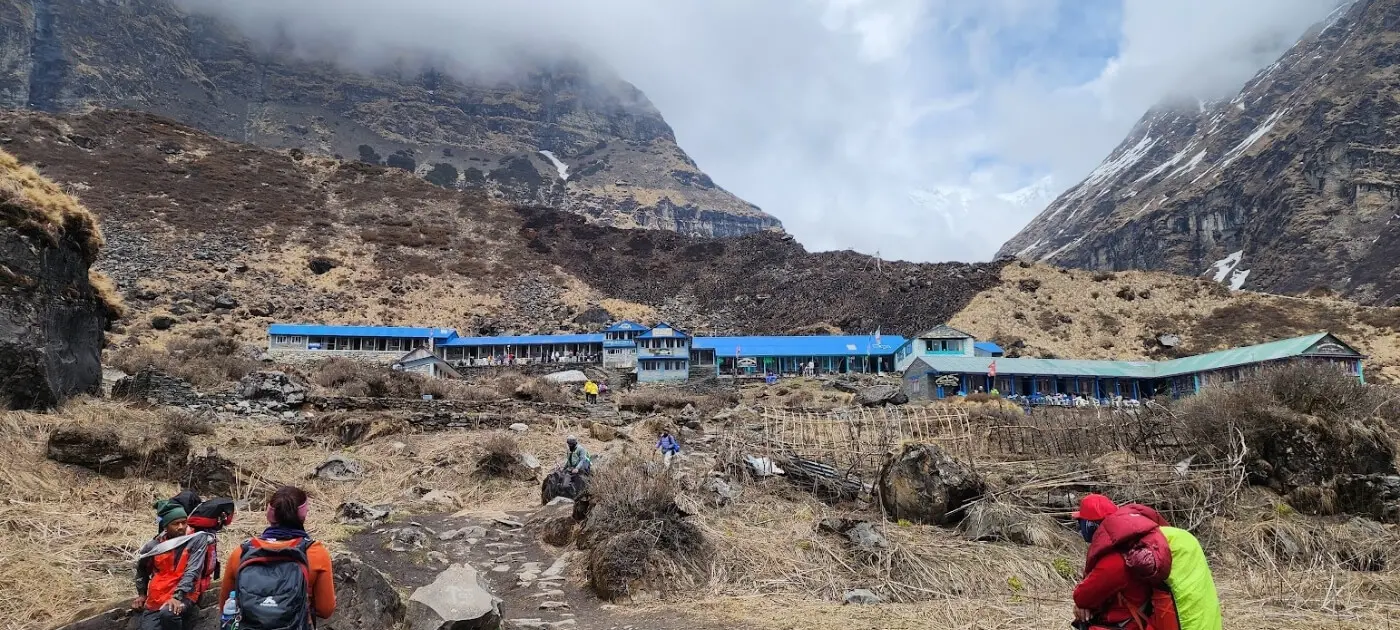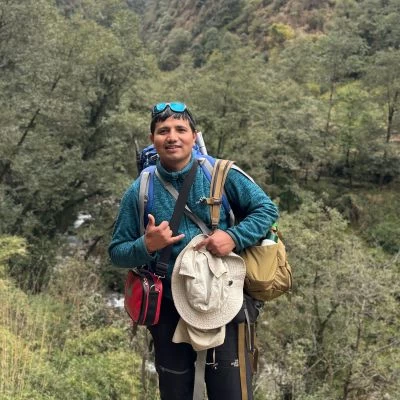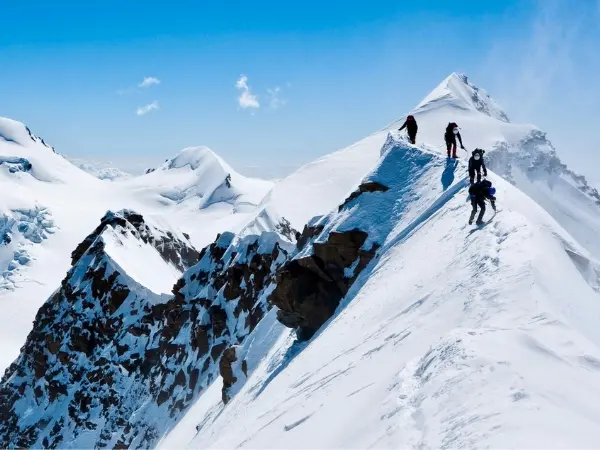Introduction
The Annapurna Base Camp trek has an intense magnetism to it. Not just trekkers, not just mountain lovers, but anyone curious about the raw power of nature gets attracted to it. The adventure begins from Pokhara, which feels less like a holiday and more like a calling. Every step feels like stepping deeper into a tale written by the mountains themselves.
Pokhara, The Gateway to Annapurna
Every journey on the Pokhara to Annapurna Base Camp trek usually starts in Pokhara, a calm lakeside city. On clear weather, Fewa Lake reflects the Machhapuchhre peak, offering a glimpse of the mountains ahead. The Cafes are filled with trekkers preparing for the trail some a bit nervous and others filled with excitement to start the journey.
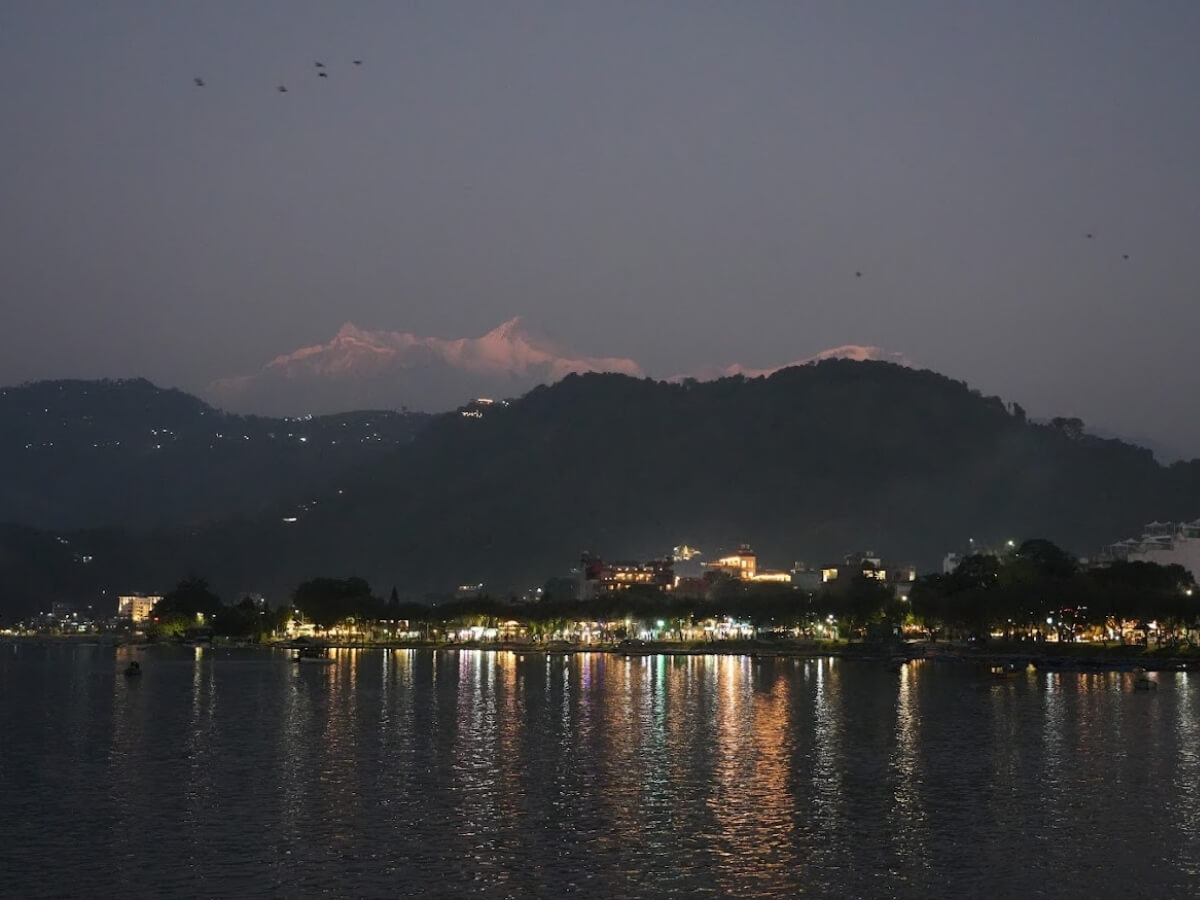
The Pull of the Mountains
Why choose the trek from Pokhara to Annapurna Base Camp? Because it leads directly into the Annapurna Sanctuary, which is a peaks-surrounded natural amphitheater. You enter the heart of giants here, unlike Everest, which you orbit from a distance and this kind of intimacy is rare. That ongoing feeling of intimacy is one of the trek's highlights at Annapurna Base Camp.
Rice Terraces and Smiling Farmers Along the Path
Variety is what makes hiking to Annapurna Base Camp so lovely. You can be in rice terraces with smiling farmers one minute, and then you're in rhododendron forests with birdsong all around you the next. Glaciers thunder in the distance higher up. The trek is not just uphill walking, it’s a shifting story told by landscapes.

A Well-Planned Route Makes Trekking More Comfortable
It's helpful to comprehend the ABC trek itinerary before you put on your boots. Some people choose the shorter trek, roughly 7-day Annapurna Base Camp trek, while others prefer the traditional 10 to 12 days. The trip is thoughtfully well placed in either case. It makes sure that your body adapts to the terrain and altitude by balancing rest periods with steep ascents.
The First Steps: Pokhara to Nayapul
The trail typically starts with a short drive toJhinu Danda. That first step, heavy with excitement, marks the official start of the Annapurna Base Camp trekking route. The route gently ascends, passing little stores and streams. Sunlight filters through trees. It feels deceptively easy, a reminder that mountains are known for saving surprises.
Into the Stairways of Chhomrong
Your trekking starts from here, in Chhomrong, a village positioned on terraces that resemble steps carved into the hillside, is soon at your destination. This is a must visit place located at the Annapurna Base Camp trekking route, this is the final permanent settlement on the ABC trek itinerary. From this point, the trail carries you deeper into the Himalayas, marking the true beginning of the ABC adventure.
Cultural Encounters Give Trek a Deeper Meaning
In addition to the mountain peaks, trekkers leave with the memories of the people. The trekking trail of Annapurna base camp traverses through the Gurung and Magar villages which have got their own culture consistent on the verge of mountains. As you pass, kids shout "Namaste!" Elders in Chhomrong may be seen weaving baskets. Mountains and culture blend together, giving the journey a deeper meaning than just a straightforward walk.
The Long Descent and Rise Again
From Chhomrong your knees are challenged by endless stone staircases. Each step demanded concentration as they descended to the river and then ascended again. This part tells you why most people describe the walk to Annapurna Base Camp as “moderate but relentless”. Yet, views of Annapurna South and Hiunchuli motivate you. The pain is worth it for beauty..
Walking Through Bamboo Forests
As the name suggests, Bamboo is a green place to be. The air is cooler and smells like moss. There are rivers nearby that add their music to the forest. Teahouses here are basic but comfortable. Bamboo is a good place for trekkers to rest before climbing higher. It's a break between the comfort of the lower levels and the harsher alpine zone ahead.
To Dovan and Himalayan Hotel
The trail to Dovan and then to the Himalayan Hotel changes tone over time. There are waterfalls that fall down cliffs in silver ribbons, and the trees get thinner as they get closer to the ground. The Annapurna Base Camp trekking guide often calls this part of the trek magical, as it is a place where the jungle looses its grip and the mountains take over.
The Silence of Deurali
Arriving at Deurali feels like stepping into another world. Mist often clings to the slopes, and the landscape grows stark. The valley narrows, funneling you toward the sanctuary. Altitude hits many trekkers right here, a gentle reminder to take it easy. The Annapurna Base Camp trek cost feels irrelevant compared to the priceless silence.
Approaching Machhapuchhre Base Camp
The trail goes up steadily toward Machhapuchhre Base Camp (MBC). The air gets thinner at 3,700 meters. Machhapuchhre is a sharp, elegant mountain that people see as holy. No one has ever made it to the top. People who hike under it feel small. This is also a final stop to prepare for hiking to Annapurna Base Camp. Many trekkers stay here overnight to rest before the final climb.
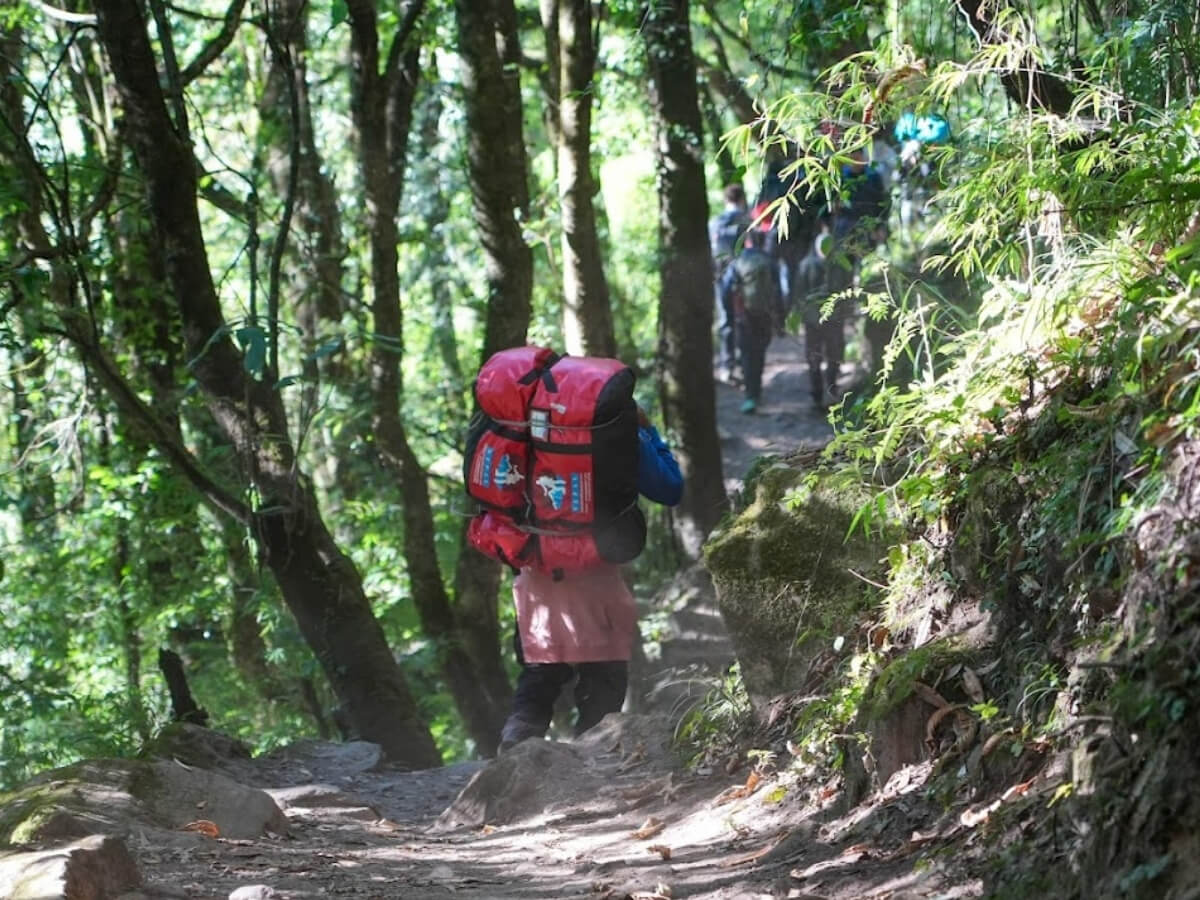
The Final Push to ABC
From MBC, the world transforms. Snow-covered ridges rise all around, and they get narrower until they form a path that leads into the Annapurna Sanctuary. The climb isn't hard, but the high altitude makes each step careful. All of a sudden, the horizon opens up, and there it is Annapurna Base Camp, 4,130 meters up. The panorama stops even seasoned trekkers in their tracks.
First Glimpse of the Sanctuary
The sunrise inside the sanctuary on the Annapurna Base Camp trek is one of the best views. Annapurna I shines gold, and Machhapuchhre shines silver. Peaks like Hiunchuli and Annapurna complete the circle. The mountains that make up the amphitheater feel holy and almost otherworldly. For many, this moment justifies every blister, every sore muscle, every hour walked.
Life at the Base Camp
Teahouses at ABC are basic, but atmosphere makes them rich. Trekkers share warm soups while snow swirls outside. Some people write in their journal quietly while others celebrate to success The guides make sure everyone is feeling well because of the high altitude. Conversations often drift toward gratitude. Being here feels less like conquering and more like being invited by the mountains.
On the Way Down
Descending towards Siwai feels lighter, though knees protest. On the way back, the sanctuary opens in a different way. Angles missed on the way up are revealed by peaks. Many itineraries divert toward Jhinu Danda, famous for its hot springs. The ABC trek itinerary often saves this reward for last soaking tired muscles while listening to the river’s endless rush.
The Healing Pools of Jhinu Danda
Trekkers enter natural hot springs next to the Modi Khola at Jhinu Danda. Days of exhaustion dissolve as the warmth seeps into bones. It feels unreal to be surrounded by forest with rising steam. This straightforward soak is frequently regarded as one of the most delightful journey finales among the numerous Annapurna Base Camp trek highlights. It’s a reward that feels perfectly timed after days of climbing.
Flora and Fauna on the Trail
The Annapurna Base Camp trekking route crosses ecosystems in a way few treks do. Lower sections burst with banana trees, bamboo, and orchids. You come across alpine shrubs and junipers higher up. Birds flourish Langurs (Monkey) swing in forests, Himalayan monals display their colors. Trekkers are reminded that the Himalayas are full of life with every step they take.
The Teahouse Tradition
Accommodation defines the character of the trek. Teahouses offer not just food and shelter, but also connection. Dal Bhat becomes a daily routine and energy source, always refilled with rice, lentils, and vegetables. “Dal bhat power, 24 hour,” locals joke. Here, strangers become friends and guides share mountain myths. This is part of the magic, according to the trekking guide for Annapurna Base Camp.
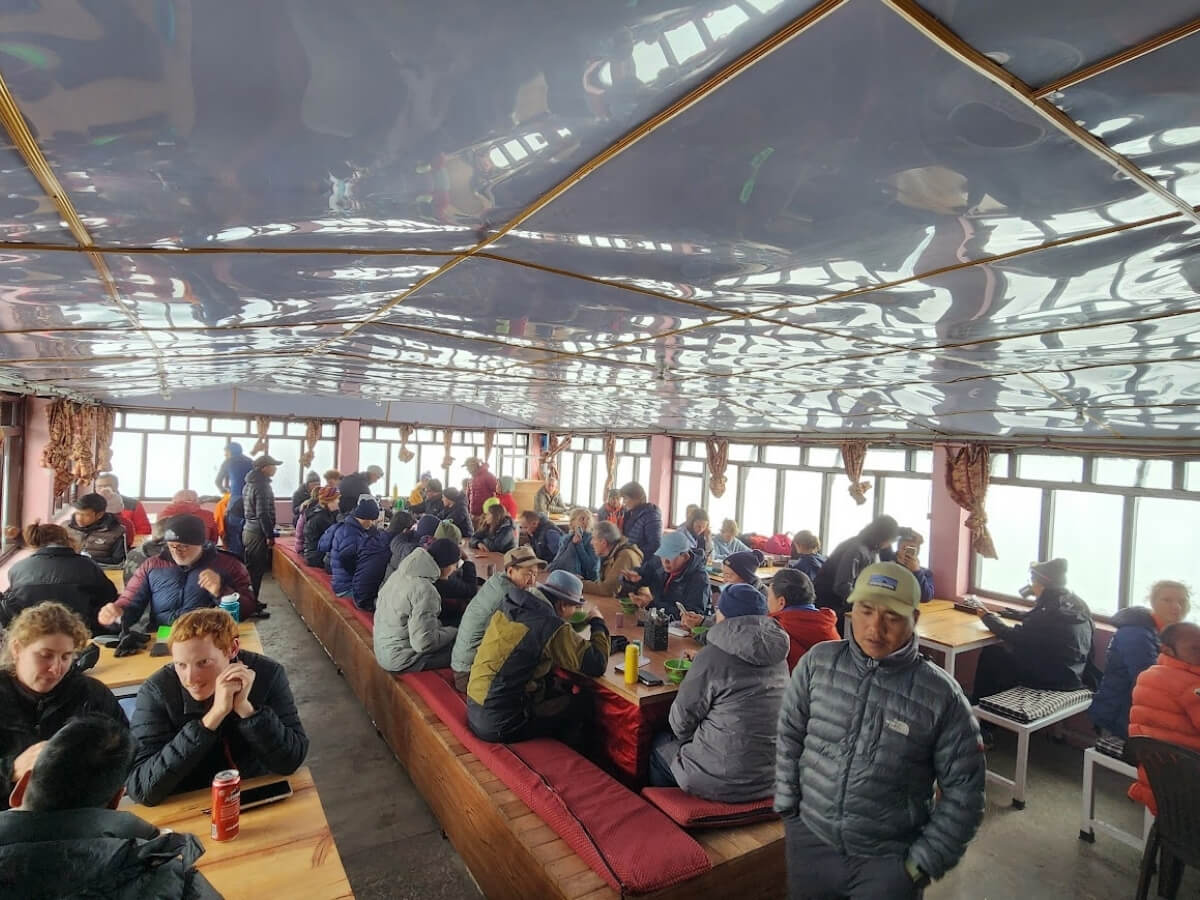
Food That Fuels the Climb
Meals aren’t just calories; they’re part of the story. At lower altitudes, menus are varied: pasta, pancakes, momos. As you go higher choices becomes fewer, but bowls of noodle soup feel divine in the cold. Sharing a plate of momos at 3,000 meters feels like a celebration. The trek from Pokhara to Annapurna Base Camp nourishes both body and soul.
Preparing for the Mountains
Your level of fitness affects how you enjoy the hike. Long staircases can feel taxing if you're not prepared, even though the Annapurna Base Camp trek is moderately difficult. It's beneficial to train with daily cardio, stair climbing, or hikes. Equally important is mental readiness, accepting that weather can change, plans may shift, and mountains decide the pace.
Essential Gear to Carry
The trek from Pokhara to Annapurna Base Camp requires careful packing. Several layers are necessary, such as warm jackets for the base camp and light shirts for the lower forests. Essentials include trekking poles, a sleeping bag, sturdy boots, and a headlamp. Add sunscreen, water purification, and a good camera to capture the memories.
Safety on the Trail
The invisible challenge is altitude. Hiking to Annapurna Base Camp at 4,130 meters increases the risk of altitude sickness. Slow ascent, staying hydrated, and paying attention to your body are all recommended by the Annapurna Base Camp trekking guide. It's important to pay attention to symptoms like headaches and nausea as they are warning signs. Being humble is essential for survival in the mountains as it demands respect.
Annapurna Base Camp Trek Cost and Value
The Annapurna Base Camp trek cost usually ranges from $500 to $1,200, depending on style. Trekking solo is okay if you are in a tight budget, however guided packages is highly recommended as they provide more comfort and assistance but they can be little expensive. In either case, every amount you spent feels like an investment in memories rather than just bills.
What’s Included in the Cost
That cost typically covers accommodation in teahouses, meals along the trail, and the two required permits, the TIMS card and the Annapurna Conservation Area Permit (ACAP). Porters and Guides add extra charges. Renting equipment in Pokhara can save costs. Keep in mind that permits are non-negotiable, but the ABC trek itinerary may be flexible. When planning, it is important to remember, the ABC trek itinerary might be flexible, but permits are non-negotiable.
Annapurna Trek’s True Value Beyond Money
The Annapurna Base Camp trek highlights cannot be valued in money. They are in that amazing silence at 4,130 meters, watching sunsets, and laughing with strangers. Trekkers frequently assert that the journey itself is more valuable than arriving at the base camp. Long after credit cards are forgotten, the hard work and small victories are what stay with you.
Choosing the Right Season for trek
The trek is transformed by the trekking. The best ideal time to trek Annapurna Base Camp is spring or autumn. Autumn brings crisp air and clear skies while spring brings rhododendrons and mild warmth. Winter is a time of solitude but it gets icy roads. Monsoon fills valleys with green, but also with leeches and landslides. So spring and autumn season are best to trek.
Trekking in Spring
In March and April, forests is covered with colors. Hillsides are painted pink and red by rhododendrons. This is a popular time of year for the trek from Pokhara to Annapurna Base Camp because of the mild temperatures. The combination of bloom and snow-capped peaks makes for unforgettable photography and cheerful walking days.
Trekking in Autumn
Trekkers from all over the world come in October and November. The skies stay blue for weeks, revealing every ridge and glacier. Nights are cold but days are perfect for walking. This is when the Annapurna Base Camp trekking route feels busiest, with a buzzing atmosphere in teahouses. If you want energy and community, autumn is unbeatable.
Trekking in Winter
The trail becomes silent from December to February. Paths may freeze, and teahouse roofs are covered in snow. The magic quietly increases along with the difficulty of the Annapurna Base Camp trek. You might feel lonely because of the fewer hikers. Wrapped in layers, sipping hot tea while watching snow swirl, winter is tough, but deeply rewards those who dare.
Trekking in Monsoon Months
Rainfall occurs from June to August. This is the most difficult season because of landslides, leeches, and cloud-covered peaks. Nevertheless, some adventurers travelers continue to try the monsoon trek to the Short Annapurna Base Camp, seeking quite paths and green valleys. It's beautiful but risky, reminding us that nature decides, not plans and schedules that is why monsoon are not suitable for most of the people.
Myths of Annapurna
Mountains here carry stories. Here, locals believe Annapurna is the goddess of food and nourishment. Because her sanctuary is revered and regarded as a heavenly guardian, Machhapuchhre has not been climbed. Along the trail, the Annapurna Base Camp trekking guide frequently discusses these myths. Belief and mountain blend, adding spiritual weight to every step and making journey feel more meaningful.
Annapurna Base Camp vs Everest Base Camp
How does ABC compare to Everest Base Camp is a question that trekkers frequently ask. The trek to Annapurna Base Camp from Pokhara is easier to get to, lower in elevation, and shorter. Everest seems harsher and more isolated. Annapurna feels more cultural and greener. ABC is frequently the best option for beginners because it is challenging but kind, rewarding yet manageable. Without being overwhelming, it provides a rich fusion of adventure, tradition, and nature.
Every Step on Annapurna Reflects Effort and Growth
The Annapurna Base Camp trek is not just about mountains. These are inner moments. recognizing that you can ascend farther than you initially believed. Around a fire, laughing with strangers. observing the frozen air as your breath rises. Mentioning the difficulty of the Annapurna Base Camp trek reminds us that progress takes effort.
Returning back to Pokhara
The final descent feels like a unraveling dream. By the time you reach Pokhara, the city seems and feels unreal. You're welcomed back with music by the lake, warm showers, and cafes. The Pokhara to Annapurna Base Camp trek ends where it started, but you return changed and transformed inside you with carrying mountains within you, long after your boots are off. More deeply than any photograph could ever capture, the memories of every step remain inside you.
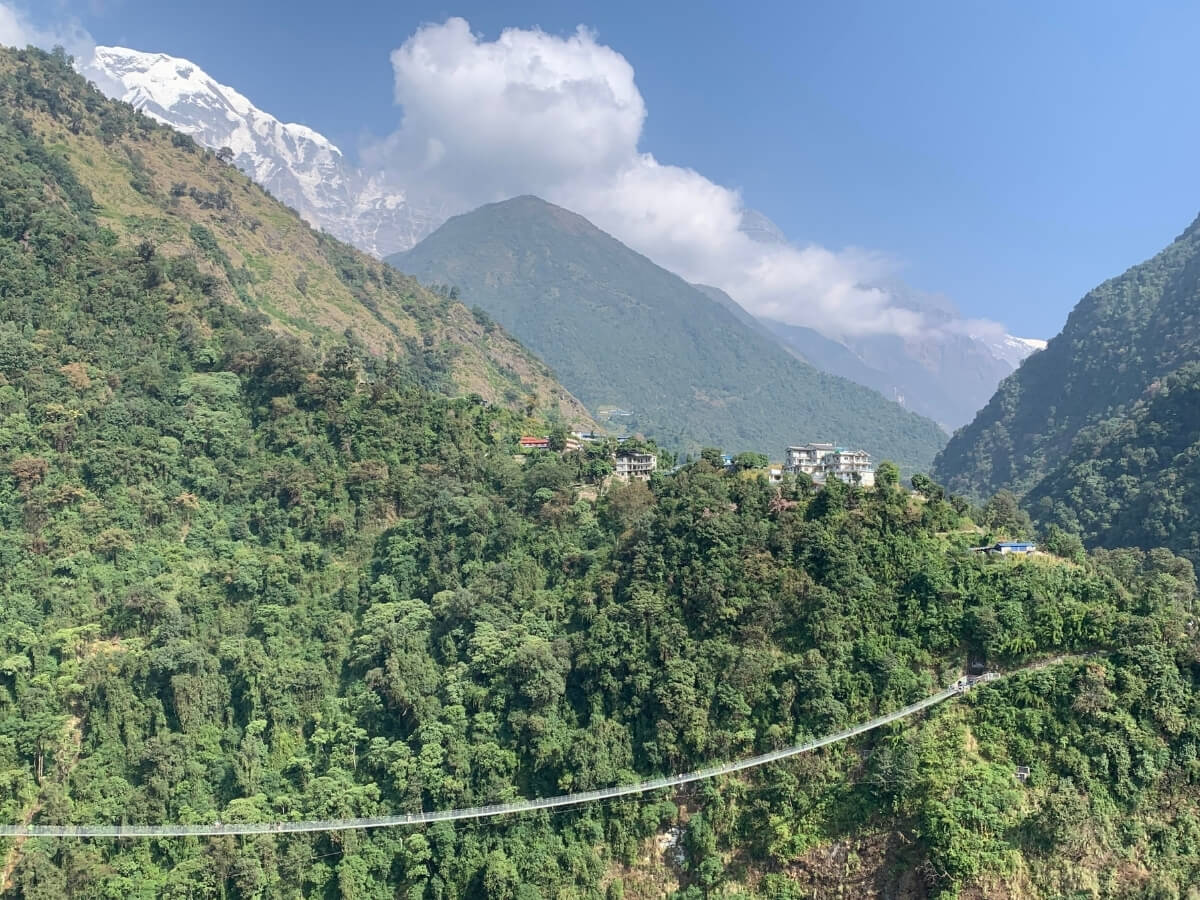
Why Annapurna Stays With You ?
Ask anyone who has trekked the Annapurna the trek, and they’ll tell you that Annapurna never leaves you. Memory of the sanctuary includes the sound of laughter, the warmth of dal bhat, and the sun shining over glaciers. The Annapurna Base Camp trek from Pokhara isn’t just a walk, it’s a story, etched forever in your heart. You learn something about people, the environment, and yourself on every trail.
From Easy Access to Life’s Deepest Perspectives
While the trek to Annapurna Base Camp is easily accessible, it is breathtaking. The trek is perfect choice for both beginner and experienced hiker due to its diverse geography, the cultural heritage and the close up views of the Himalayan giants peaks. The journey is not just about the majestic mountains, whether you take the short Annapurna Base Camp trek or prefer to stick to the longer traditional ABC trek schedule, it offers transformational insights. It gives you perspective. Every steps puts you to the tests, changes you, and deepens your bond with the nature. Ultimately, it's a life-changing experience rather than just a straightforward hike.
